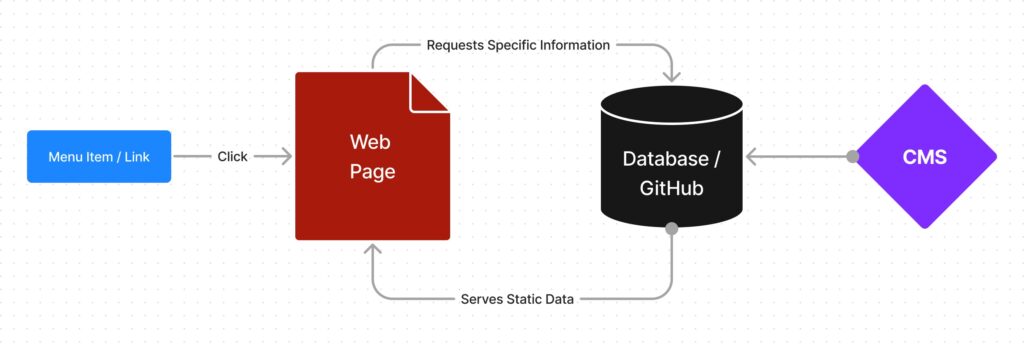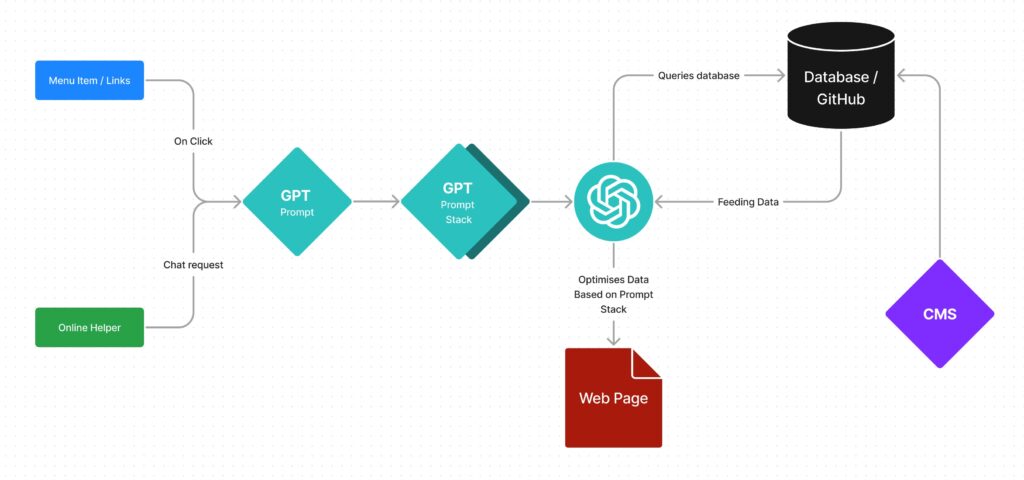Generative AI Content for data-heavy websites
Accessing data from a website follows a conventional path that has not changed since the introduction of content management systems (CMS). But now, with the onset of AI tools, quantum computing and the increased popularisation of Web 3, we might be on the cusp of breaking the mould again as we once did when we moved from static HTML websites to CMS-based systems.
Let’s first look at the traditional CMS data retrieval strategy and examine a possible model where ChatGPT becomes the engine that drives the website.
Traditional Data Retrieval
You click a menu item, it requests the data from a server, and it spits out information that has been pre-defined by an author through a content management system (CMS).
This pathway is straightforward, efficient, and requires very little server-side processing, but the content remains constant and unchanging. The data on the page often remains dormant and becomes outdated very quickly, especially in an ever-changing technological world. The data is essentially static/lifeless.
Here is a diagram of the traditional data retrieval pathway:

The AI Pathway
With the dawn of AI tools such as ChatGPT, we might now see this conventional pathway evolve from a traditional website into a living, breathing organism.
A website that will start to learn from:
- Where the user is coming from
- What the user is clicking on
- What the user is asking the website
- and other interactions
All this might help build AI prompts to serve fully customised content speaking directly to the user’s wants and needs.
The website adapts whenever there is new content on the topic, sorts the information, and dynamically updates data on a page whenever the user requests it.

AI-generated content is how all content-related data on websites could operate in the future. AI will improve the information landscape, bringing the most up-to-date information to the end user faster and more efficiently than ever before.
Integrating AI systems will be more successful in enhancing the user experience when combined as a layer that replaces conventional pathways or actions. AI essentially will step us closer to a Start Trek world of voice prompts, AI assistance and server-side access points, ultimately evolving the user experience from what it is today.
